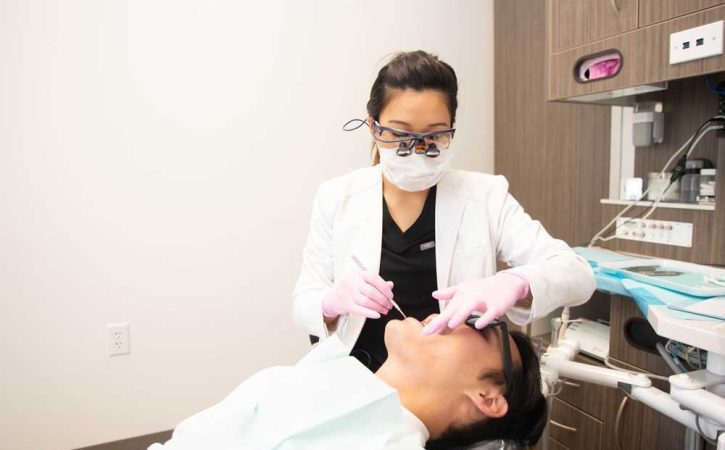
How Does Teeth Whitening Work?
November 8, 2023
0
The term “teeth whitening” describes a range of procedures used to try and improve the appearance of someone’s natural teeth. UV light therapy, bleaching, sanding down stains, and other techniques are used to whiten teeth.
Tooth sensitivity and gum irritation are two uncomfortable side effects of some teeth-whitening procedures. Let’s examine the principles of teeth whitening, safe operations, and things to be aware of regarding potential side effects.
Teeth whitening side effects
Temporary tooth sensitivity is the most frequent adverse effect of teeth whitening. Gum and mouth irritation is also typical. This reaction can be triggered explicitly by hydrogen peroxide. It Includes:- Teeth sensitivity
- Ineffective results
- Teeth sensitivity
- Throat or Stomach May Hurt.
How long does it last?
The type of whitener you’re using will determine how long your teeth will stay whiter. Your way of life has an impact as well. The purpose of teeth whitening methods is to lessen stains, not to eliminate them. The longevity of dental procedures and at-home products is increased if you maintain good oral hygiene.What occurs during teeth whitening?
You will need to visit the teeth whitening services two or three times to have your teeth whitened. To create a mouthguard, the dentist will take an impression of your teeth and instruct you on how to use bleaching gel. Then, for a few weeks, you apply the gel regularly at home with your mouthguard for a predetermined time.What Are the risk elements of teeth whitening?
Your gums may evolve when exposed to the chemicals used in teeth whitening, regardless of your treatment, especially if you already have sharp teeth. Additionally, there’s a risk of gum burns and tooth enamel damage from some at-home whitening kits.Benefits of teeth whitening
It helps destroy bacteria As the procedure essentially removes the stains on the tooth’s surface, it also gets rid of dangerous bacteria, plaque, and tartar accumulation. Your teeth will be less vulnerable to tooth decay and gum disease once those are gone, enhancing your general oral health. It helps you increase your self-confidence. One’s self-esteem is frequently negatively impacted by having yellowing teeth. Discolored teeth almost always make it difficult for someone to smile, especially in public. Whitening done professionally can alter that. After the procedure, your confidence will significantly increase, and you can confidently show off your beautiful white teeth. Having whiter teeth enhances your impression. Yellowing teeth frequently indicates poor oral hygiene, impacting one’s reputation. People often need whitening treatments to prevent this, especially those who work in customer service, tourism, or managerial roles. Enhanced oral care Those who have had professional teeth whitening procedures tend to take better care of their teeth than people who have not; the results of these procedures can motivate patients to keep their teeth whiter than they were before. Smiling with whiter teeth makes you look friendlier. Social interaction is greatly enhanced by smiling. Smiling more often makes others feel more at ease with you, and flashing your whites will make it even better. This will show you a practical advantage in meetings and discussions with clients.Conclusion
Several cosmetic procedures are used in professional teeth whitening to provide a whiter smile. Specific functions can be completed at your dentist’s office, while others can be completed at home using whitening kits or products. Consider incorporating whitening mouthwash or toothpaste into your dental hygiene regimen if you have slight tooth discoloration. If You Face any issues related to oral health, visit the affordable dentist near me for more information.- SHARES






